#HybridCloud
Text
CLOUD COMPUTING: A CONCEPT OF NEW ERA FOR DATA SCIENCE
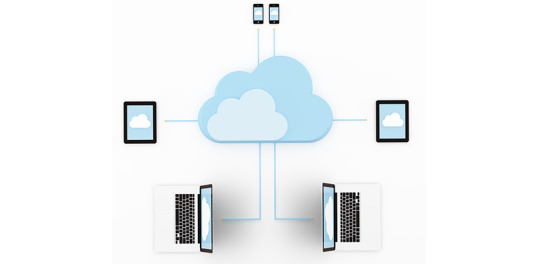
Cloud Computing is the most interesting and evolving topic in computing in the recent decade. The concept of storing data or accessing software from another computer that you are not aware of seems to be confusing to many users. Most the people/organizations that use cloud computing on their daily basis claim that they do not understand the subject of cloud computing. But the concept of cloud computing is not as confusing as it sounds. Cloud Computing is a type of service where the computer resources are sent over a network. In simple words, the concept of cloud computing can be compared to the electricity supply that we daily use. We do not have to bother how the electricity is made and transported to our houses or we do not have to worry from where the electricity is coming from, all we do is just use it. The ideology behind the cloud computing is also the same: People/organizations can simply use it. This concept is a huge and major development of the decade in computing.
Cloud computing is a service that is provided to the user who can sit in one location and remotely access the data or software or program applications from another location. Usually, this process is done with the use of a web browser over a network i.e., in most cases over the internet. Nowadays browsers and the internet are easily usable on almost all the devices that people are using these days. If the user wants to access a file in his device and does not have the necessary software to access that file, then the user would take the help of cloud computing to access that file with the help of the internet.
Cloud computing provide over hundreds and thousands of services and one of the most used services of cloud computing is the cloud storage. All these services are accessible to the public throughout the globe and they do not require to have the software on their devices. The general public can access and utilize these services from the cloud with the help of the internet. These services will be free to an extent and then later the users will be billed for further usage. Few of the well-known cloud services that are drop box, Sugar Sync, Amazon Cloud Drive, Google Docs etc.
Finally, that the use of cloud services is not guaranteed let it be because of the technical problems or because the services go out of business. The example they have used is about the Mega upload, a service that was banned and closed by the government of U.S and the FBI for their illegal file sharing allegations. And due to this, they had to delete all the files in their storage and due to which the customers cannot get their files back from the storage.
Service Models
Cloud Software as a Service
Use the provider's applications running on a cloud infrastructure
Accessible from various client devices through thin client interface such as a web browser
Consumer does not manage or control the underlying cloud infrastructure including network, servers, operating systems, storage
Google Apps, Microsoft Office 365, Petrosoft, Onlive, GT Nexus, Marketo, Casengo, TradeCard, Rally Software, Salesforce, ExactTarget and CallidusCloud
Cloud Platform as a Service
Cloud providers deliver a computing platform, typically including operating system, programming language execution environment, database, and web server
Application developers can develop and run their software solutions on a cloud platform without the cost and complexity of buying and managing the underlying hardware and software layers
AWS Elastic Beanstalk, Cloud Foundry, Heroku, Force.com, Engine Yard, Mendix, OpenShift, Google App Engine, AppScale, Windows Azure Cloud Services, OrangeScape and Jelastic.
Cloud Infrastructure as a Service
Cloud provider offers processing, storage, networks, and other fundamental computing resources
Consumer is able to deploy and run arbitrary software, which can include operating systems and applications
Amazon EC2, Google Compute Engine, HP Cloud, Joyent, Linode, NaviSite, Rackspace, Windows Azure, ReadySpace Cloud Services, and Internap Agile
Deployment Models
Private Cloud: Cloud infrastructure is operated solely for an organization
Community Cloud : Shared by several organizations and supports a specific community that has shared concerns
Public Cloud: Cloud infrastructure is made available to the general public
Hybrid Cloud: Cloud infrastructure is a composition of two or more clouds
Advantages of Cloud Computing
• Improved performance
• Better performance for large programs
• Unlimited storage capacity and computing power
• Reduced software costs
• Universal document access
• Just computer with internet connection is required
• Instant software updates
• No need to pay for or download an upgrade
Disadvantages of Cloud Computing
• Requires a constant Internet connection
• Does not work well with low-speed connections
• Even with a fast connection, web-based applications can sometimes be slower than accessing a similar software program on your desktop PC
• Everything about the program, from the interface to the current document, has to be sent back and forth from your computer to the computers in the cloud
About Rang Technologies:
Headquartered in New Jersey, Rang Technologies has dedicated over a decade delivering innovative solutions and best talent to help businesses get the most out of the latest technologies in their digital transformation journey. Read More...
#CloudComputing#CloudTech#HybridCloud#ArtificialIntelligence#MachineLearning#Rangtechnologies#Ranghealthcare#Ranglifesciences
8 notes
·
View notes
Text
IBM Maximo AWS Deployment Strategies

The Business Value of IBM Maximo, a recent IDC report that surveyed 9 companies with an average of 8,500 employees, found that adopting IBM Maximo resulted in a business benefit of USD 14.6 million per year per organization, 43% less unplanned downtime, and USD 8.6 million in total equipment cost avoidances.
One comprehensive, cloud-based application platform for asset monitoring, management, predictive maintenance, and reliability planning is IBM Maximo Application Suite (MAS). Maximo optimizes performance, extends asset lifecycles, and reduces downtime and costs for high-value assets using AI and analytics. Hosting Maximo on a scalable infrastructure maximizes performance, hence the current tendency is to shift it to the cloud. In this trip, MAS migration and deployment on AWS Cloud are gaining popularity.
The growing demand for Maximo AWS Cloud migration
Migrating to cloud helps enterprises improve operational resilience and dependability while updating software with minimal effort and infrastructure constraints. Due to the growing demand for data-driven asset management, firms must aggregate data from diverse departments to identify trends, generate predictions, and make better asset management decisions.
Last April, IBM said Maximo 7.6 and add-on support would stop in September 2025. All Maximo EAM customers must upgrade to the latest cloud-based MAS. Maximo migration and modernization are become increasingly significant to clients.
IBM has released new containerized versions of Maximo Application Suite as a Service (MAS SaaS) on AWS Marketplace with Bring Your Own License (BYOL) to assist Maximo migration to AWS. MAS SaaS on AWS is another milestone in Maximo’s integration of Monitor, Health, and Visual Inspection into a unified suite.
What makes MAS SaaS distinct
IBM Site Reliability Engineering (SRE) specialists use best practices to continuously maintain and administer MAS SaaS, a subscription-based AWS service. This partnership gives customers an industry-leading IBM asset management system underpinned by AWS’s size, agility, and cost-efficiency.
Upgrades and migrations to MAS 8 are possible with MAS SaaS. The data update is similar to prior upgrades, but ROSA and other dependencies require architecture changes. The migration is comparable to how clients transitioned from on-premise to Maximo EAM SaaS Flex, but with MAS changes. Perpetual on-premises customers would stop paying Service & Support (S&S) and purchase a SaaS subscription, on-premises Subscription License customers would start a new subscription, and existing MAS Flex and MAS Managed Service customers would start a new subscription to migrate to MAS SaaS.
Our IBM Consulting Cloud Accelerator (ICCA) technology lets firms plan migration and upgrade strategies before investing.
Maximo migration strategy of a global energy firm
IBM worked closely with an energy company confronting the following challenges:
Infrastructure needed for latest Maximo version takes longer.
WebSphere, Maximo’s core, experienced high-availability and performance difficulties.
Lack of data fabric and integration layer hinders cross-application data interchange.
Complex setup, failures, and security with manual end-to-end deployment.
Since Maximo Application Suite 8 (MAS8) tackles industry issues like failure risk, escalating maintenance costs, sustainability, and compliance laws, the customer chose it. The client chose AWS Cloud for its deployment flexibility, scalability, high availability, and secure architecture.
Approach to solution
This is how IBM accelerated the energy company’s Maximo move to AWS:
Used Infra as a code to upgrade Maximo from 7.6.0.9 to 7.6.1.2.
IaC allowed instance spin-up for auto scaling. This automation reduces the time to spin up and execute the new environment and addresses multi-AWS availability zone deployment latency.
Used AWS DMS for data migration and schema conversion.
IaC spun the DR environment on demand to reduce database replication (DR) infrastructure and expense. DR capabilities update data in availability zone and DR area.
Achieved data exchange across applications using IBM Cloud Pak for Data and standardized integration using IBM Cloud Pak for Integration components.
Solution components
Maximum Enterprise Application Management (EAM) has a 3-tier design with these components:
HTTP/Web Tier and Application Tier using IBM WebSphere and HIS installed EC2 instance under private subnet for application security.
Database Tier uses AWS Oracle RDS with replication for DR under private subnet.
AWS best practices were used to configure VPC with public and private subnets.
Application servers and deployment manager were autoscaled by Auto Scaling Group.
Maximum web-based UI resolution for external access using AWS Route 53.
WAF was the initial line of defense against web exploits.
Integration of Terraform and CFT IaC scripts provided autoscaling architecture.
AWS Reference Architecture
Max on RedHat OpenShift Service on AWS (ROSA) helps clients
Containerized MAS 8.0 runs on RedHat OpenShift. AWS, IBM, and RedHat developed an IBM MAS on ROSA reference architecture to help customers inexperienced with production containerization. ROSA, a fully managed, turnkey application platform, supports IBM MAS configuration and offloads cluster lifecycle management to RedHat and AWS, allowing organizations to focus on application deployment and innovation. This means IBM MAS clients don’t need to develop, administer, or maintain RedHat OpenShift clusters.
Operating Model and Maximo Migration
Top 3 Maximo AWS migration accelerators
Clients can migrate to the cloud using three IBM MAS deployment methods on AWS Cloud:
ROSA-powered MAS SaaS on AWS
ROSA-powered AWS MAS
Customer-hosted ROSA
Why use customer-hosted ROSA
The customer-hosted ROSA option for hosting IBM MAS in a customer’s VPC with ROSA is powerful. ROSA is perfect for MAS deployments because it seamlessly deploys, scales, and manages containerized applications.
The benefits of this choice are enormous. Full control over the infrastructure while still subject to the organization’s monitoring, controls, and governance standards allows businesses to customize and adjust the environment to their needs. This control includes adding MAS integrations and enforcing cloud security and governance requirements. ROSA charges are combined into one AWS bill and drawn from any AWS enterprise agreement, simplifying financial management.
AWS enterprise agreements and Compute Savings Plans offer infrastructure savings for MAS implementations. Because the ROSA cluster operates under the customer’s AWS account, customers can buy upfront ROSA contracts and get a one-year or three-year ROSA service charge discount.
Why IBM for Maximo AWS migration?
Any modernization effort must include cloud migration. Cloud migration is not a one-size-fits-all method, and each organization faces unique cloud adoption difficulties.
IBM Consulting’s Application Modernization offering helps clients migrate and modernize AWS applications faster, cheaper, and more efficiently, reducing technical debt and accelerating digital initiatives while minimizing business risk and improving business agility.
IBM offers unique cloud migration services to accelerate customer application migration to AWS:
Cloud migration factory capabilities including proven frameworks and processes, automation, migrating templates, security policies, and AWS-specific migration squads speed up delivery.
IBM Garage Methodology, IBM’s cloud services delivery capabilities, ROSA, and AWS Migration tools and accelerators accelerate migration and cloud adoption.
ICCA, IBM’s proprietary framework for migration and modernization, reduces risk. ICCA for AWS Cloud automates various modernization procedures, simplifying and speeding up company agility. Before investing, businesses can plan migration and modernization strategies. Discover IBM Consulting Cloud Accelerator for AWS Cloud.
Our well-defined pattern-based migration methodology includes re-factor, re-platform, and containerization using AWS managed services and industry-leading tools to remove and optimize technical debt.
Finally, IBM offers customizable t-shirt-sized price models for small, medium, and large migration sizes, ensuring clients’ migration scope is obvious.
IBM helps clients migrate applications, like Maximo to AWS Cloud
In conclusion, clients seek IBM’s expertise to:
1.Upgrade Maximo 7.6x (expiring 2025) to MAS 8.
2.On-premise workload to AWS Cloud for elastic, scalable, and highly available infrastructure and runtime
IBM Consulting can help
AWS Premier Partner IBM Consulting accelerates hybrid cloud journeys on the AWS Cloud by leveraging business and IT transformation skills, processes, and tools from many industries. On AWS Cloud, IBM’s security, enterprise scalability, and open innovation with Red Hat OpenShift enable enterprises grow swiftly.
BM Consulting develops cloud-native apps in AWS Cloud with 21,000+ AWS-certified cloud practitioners, 17 validated SDD programs, and 16 AWS competencies. IBM Consulting is the best AWS partner due to acquisitions like Nordcloud and Taos, advancements at IBM Research, and co-development with AWS.
Read more on Govindhtech.com
2 notes
·
View notes
Text
3 notes
·
View notes
Text
IT Modernization and Cloud Adoption Services in Dallas, Texas, Spearhead Technology
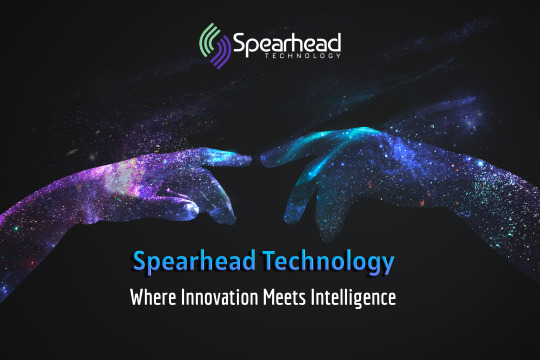
IT Modernization and Cloud Adoption Services in Dallas, Texas, Spearhead Technology
IT modernization and cloud adoption services are designed to help organizations update their technology infrastructure and move their operations to the cloud.
This can include migrating applications and data to cloud-based platforms, implementing new tools and technologies to improve efficiency and security, and leveraging analytics and automation to drive innovation and growth.
The benefits of IT modernization and cloud adoption can include reduced costs, improved agility and scalability, enhanced collaboration and communication, and better overall performance and customer satisfaction.
However, it is important to work with a reputable and experienced provider to ensure a smooth and successful transition to the cloud.
#cloudadoption#cloudmigration#cloudstrategy#cloudconsulting#cloudtransformation#cloudcomputing#cloudtechnology#hybridcloud#multicloud#publiccloud#privatecloud#cloudsecurity#cloudmanagement#cloudoptimization#cloudarchitecture#clouddeployment#cloudintegration#cloudsolutions#cloudservices#itmodernization#DigitalTransformation#BusinessTransformation#Spearhead#SpearheadTechnology#Dallas#Texas#USA#startups
2 notes
·
View notes
Text
Dive into the transformative potential of Azure in driving digital transformation initiatives. Discover how Microsoft's cloud computing platform is reshaping industries, enabling agility, scalability, and innovation. From hybrid solutions to AI-powered insights, explore the diverse capabilities of Azure and its impact on the future of technology-driven business operations.
1 note
·
View note
Text
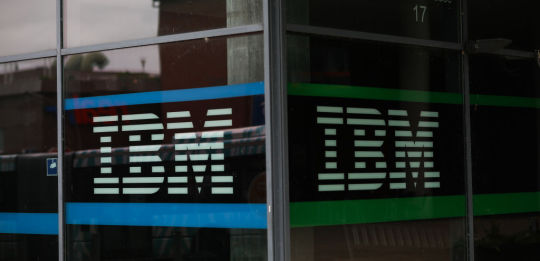
Post: IBM moves deeper into hybrid cloud management with $6.4B HashiCorp acquisition | TechCrunch https://www.blaqsbi.com/5Qgn
0 notes
Text
What is cloud technology, and how does it work?
Cloud technology refers to the delivery of computing services—including servers, storage, databases, networking, software, analytics, and intelligence—over the Internet ("the cloud") to offer faster innovation, flexible resources, and economies of scale. Essentially, cloud computing eliminates the need for organizations to own and maintain physical hardware and infrastructure to run their applications or manage their data.
Virtualization: Cloud providers use virtualization technology to create virtual instances of computing resources (such as virtual servers, storage, and networks) from physical hardware. This allows multiple users to share the same physical hardware while maintaining isolation and security.
Infrastructure as a Service (IaaS): In the IaaS model, cloud providers offer virtualized computing resources over the Internet. Users can rent virtual servers, storage, and networking infrastructure on-demand and pay only for the resources they consume, scaling up or down as needed.
Platform as a Service (PaaS): PaaS providers offer a platform allowing customers to develop, run, and manage applications without the complexity of building and maintaining the underlying infrastructure. This includes tools for developing, testing, deploying, and managing applications.
Software as a Service (SaaS): SaaS providers deliver software applications over the Internet on a subscription basis. Users can access these applications through a web browser or API without needing to install or manage any software locally.
Public, Private, and Hybrid Clouds: Cloud services can be deployed in different deployment models:
Public Cloud: Services are provided over the Internet and shared among multiple users.
Private Cloud: Services are provisioned for a single organization and hosted either on-premises or by a third-party provider.
Hybrid Cloud: Combines public and private cloud environments, allowing data and applications to be shared between them.
Scalability and Elasticity: Cloud computing offers scalability, allowing users to quickly scale resources up or down based on demand. Elasticity refers to the ability to automatically provision and de-provision resources in response to workload fluctuations.
Pay-per-Use Billing: Cloud services are typically billed based on usage, allowing organizations to pay only for the resources they consume. This pay-as-you-go model can result in cost savings compared to traditional IT infrastructure, where resources may be underutilized.
Security and Compliance: Cloud providers implement robust security measures to protect data and infrastructure, including encryption, identity and access management, and compliance certifications. However, users are also responsible for securing their applications and data within the cloud environment.
#magistersign#onlinetraining#support#usa#cannada#CloudTechnology#IaaS#PaaS#SaaS#CloudComputing#Virtualization#Scalability#Security#CostEfficiency#Innovation#HybridCloud#PublicCloud#PrivateCloud#TechTrends#DigitalTransformation#ITInfrastructure#CloudServices
0 notes
Text
Top cloud company in India
Cloud computing has become an integral part of modern business operations, providing companies with the flexibility and scalability they need to stay competitive in today's fast-paced digital landscape. As one of India's top cloud services providers, Azure API Management offers businesses a comprehensive Cloud Computing platform that includes Cloud Infrastructure, Azure API Management, and a wide range of other services to meet their unique needs. With a proven track record of delivering high-quality cloud solutions to clients across various industries, Azure API Management is the go-to choice for companies looking to harness the power of the cloud for their business. Explore how Azure API Management stands out as the top cloud company in India and how it can help transform your business operations for the better.
#cloudinfrastructure#digitaltransformation#cloudcomputing#itinfrastructure#datacenter#hybridcloud#iaas#paas#saas#cloudsecurity#scalability#datamanagement#cloudservices#cloudmigration#techinnovation
0 notes
Text
Critical Applications of Hybrid Cloud & Multi-Cloud in 2024

How multi-cloud and hybrid cloud can help you optimize your cloud infrastructure? Go through the blog to know the use cases & differences of these two cloud models, and how to leverage their advantages.
0 notes
Text
Cloud Computing Solutions | Transform Your Business Neo Infoway
Discover the power of cloud computing with our comprehensive solutions. Enhance scalability, security, and efficiency for your business operations. Explore now!
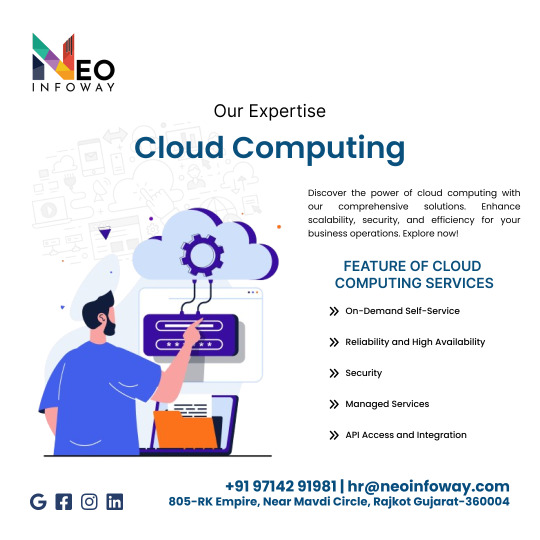
#cloudcomputing#neo#infoway#neoinfoway#cloudservices#cloudinfrastructure#cloudstorage#cloudhosting#publiccloud#privatecloud#hybridcloud#multicloud#clouddeploymentmodels#infrastructureasaservice#platformasaservice#softwareasaservice#cloudmigration#cloudsecurity#cloudarchitecture#cloudmanagement#cloudautomation#cloudscalability
0 notes
Text
Coding Power: How IBM Granite Models are Shaping Innovation

A family of generative AI models created specifically for corporate applications is IBM Granite model. Below is a summary of its salient attributes:
Emphasis on Generative AI: Granite models are helpful for jobs like content generation or code completion because they can generate new text, code, or other data types.
Business-focused: Granite models are designed to meet corporate needs and adhere to standards, having been trained on reliable enterprise data.
A Variety of Models Are Available: The Granite series has a number of versions with varying capacities and sizes to meet different needs.
Open Source Code Models: IBM has made its Granite code model family available as open-source, enabling programmers to use them for a range of coding jobs.
Put Trust and Customisation First: Granite models are designed with an emphasis on transparency and trust, and they can be customised to meet the unique requirements and values of an organisation.
All things considered, companies wishing to include generative AI into their processes can find a strong and flexible answer in IBM’s Granite models.
Optimising Generative AI Quality with Flexible Models
In dynamic gen AI, one-size-fits-all techniques fail. A variety of model options is needed for enterprises to exploit AI’s power:
Encourage creativity
Teams may respond to changing business requirements and consumer expectations by utilising a varied palette of models, which also encourages innovation by bringing unique strengths to bear on a variety of issues.
Customize for edge
A variety of methods enable businesses to do just that. Gen AI is adaptable to several jobs; it can be programmed to write code to generate short summaries or to answer questions in chat applications.
Cut down on time to market
Time is critical in the hectic corporate world of today. Companies may launch AI-powered products more quickly by streamlining the development process with a wide model portfolio. In the context of generation AI, this is particularly important since having access to the newest developments gives one a significant competitive edge.
Remain adaptable as things change
When things change, remember to remain adaptable. Both the market and company tactics are always changing. Companies may make swift and efficient changes by selecting from a variety of models. Having access to a variety of choices helps one to remain flexible and resilient by quickly adapting to emerging trends or strategic changes.
Reduce expenses for all use cases
The costs associated with various models differ. Enterprises can choose the most economical solution for every use case by utilising an assortment of models. More economical models can do certain activities without compromising quality, but others may not be able to handle the accuracy needed for expensive models. For example, in resource and development, accuracy is more important, but in customer care, throughput and latency may be more crucial.
Mitigate risks
Reduce risks by not depending too much on a single model or a small number of options. To ensure that firms are not overly affected by the limitations or failure of a particular strategy, a diversified portfolio of models is helpful in mitigating concentration risks. In addition to distributing risk, this approach offers backup plans in case problems develop.
Respect the law
Ethics are at the forefront of the ever-evolving regulatory landscape surrounding artificial intelligence. Fairness, privacy, and compliance can all be affected differently by different models. Businesses can choose models that adhere to ethical and legal requirements and handle this challenging environment with ease when there is a wide range of options.
Making the appropriate AI model choices
Now that IBM is aware of how important model selection is, how does the company handle the issue of too many options when choosing the best model for a given scenario? This difficult issue can be simplified by IBM into a few easy steps that you may use right now:
Choose an obvious use case
Find out what your company application’s particular needs and requirements are. For the model to closely match your goals, this entails creating intricate prompts that take into account nuances specific to your organisation and industry.
List every option for a model
Consider factors including latency, accuracy, size, and related dangers while evaluating different models. Accuracy, latency, and throughput trade-offs are just a few of the things you need to be aware of while evaluating any model.
Analyse the model’s characteristics
Consider how the model’s scale may impact its performance and the associated risks when you evaluate the model’s features. Determine whether the model’s size is acceptable for your purposes. Choosing the appropriate model size is crucial in this step, as larger models aren’t always better for the use case. In specific domains and application circumstances, smaller models can surpass larger ones in performance.
Test model options
Try out different model options to determine if the model behaves as predicted in situations that are similar to actual ones. For example, quick engineering or model tuning can be used to optimise the model’s performance. Output quality is assessed using academic benchmarks and domain-specific data sets.
Cost and deployment should guide your choice
Once you have tested, hone your selection by taking into account aspects like ROI, economy of scale, and the feasibility of implementing the model in your current infrastructure and processes. Consider other advantages like reduced latency or increased transparency while making your decision.
Select the most value-adding model
Decide on an AI model that best suits the requirements of your use case by weighing performance, cost, and associated hazards.
The IBM Watsonx Model Library
The IBM Watsonx library provides proprietary, open source, and third-party models by utilising a multimodel technique
Customers can choose from a variety of options, depending on what best suits their particular business needs, location, and risk tolerance.
Watsonx also gives customers the flexibility to install models on-premises, in hybrid cloud environments, and on-premises, allowing them to lower total cost of ownership and avoid vendor lock-in.
Enterprise-grade IBM Granite base models
The three primary traits that characterise foundation models can be combined. Businesses need to realise that if one quality is prioritised above the others, the others may suffer. The model must be adjusted to meet the unique needs of each organisation by striking a balance between these characteristics:
Reliable: Explicit, comprehensible, and non-toxic models.
Performant: Suitable performance level for the use cases and business domains being targeted.
Models with a lower total cost of ownership and lower risk are considered cost-effective.
IBM Research produced the flagship IBM Granite line of enterprise-grade models. Businesses can succeed in their gen AI ambitions with these models because they have an ideal combination of these traits, with a focus on trust and reliability. Do not forget that companies cannot grow artificial intelligence (AI) with unreliable foundation models.
Following a thorough refinement process, IBM Watsonx provides enterprise-grade AI models. This process starts with model innovation under the direction of IBM Research, which involves transparent data sharing through open collaborations and training on enterprise-relevant information in accordance with the IBM AI Ethics Code.
An instruction-tuning technique developed by IBM Research contributes features that are critical for enterprise use to both IBM-built and some open-source models. IBM’s “FM_EVAL” data set simulates enterprise AI systems that are used in real-world settings, going beyond academic benchmarks. Watsonx.ai offers clients dependable, enterprise-grade gen AI foundation models by showcasing the most robust models from this pipeline.
Most recent model announcements
Granite code models are a series of models that encompass both instruction-following model variants and a basic model, trained in 116 programming languages and with sizes ranging from 3 to 34 billion parameters.
Granite-7b-lab is a general-purpose work support system that is adjusted to integrate new abilities and information through the IBM large-scale alignment of chatbots (LAB) methodology.
Read more on govindhtech.com
#aimodels#ibmgranitemodels#IBMwatsonx#hybridcloud#artificialintelligence#News#technews#technology#technologynews#technologytrends#govindhtech#ibm
0 notes
Text
1 note
·
View note
Text
Cloud Computing Solutions | Transform Your Business Neo Infoway
Discover the power of cloud computing with our comprehensive solutions. Enhance scalability, security, and efficiency for your business operations. Explore now!
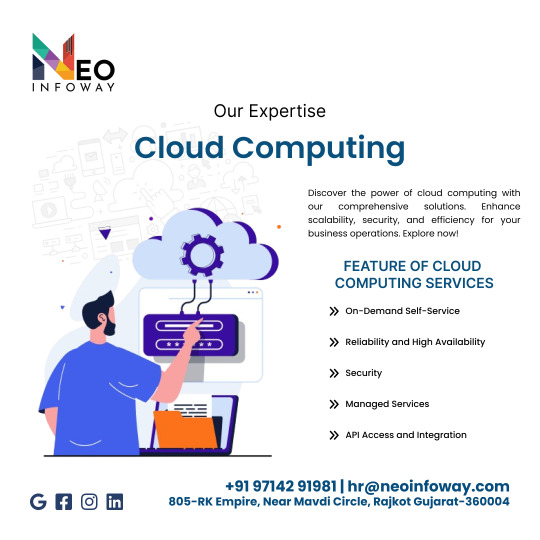
#cloudcomputing#neo#infoway#neoinfoway#cloudservices#cloudinfrastructure#cloudstorage#cloudhosting#publiccloud#privatecloud#hybridcloud#multicloud#clouddeploymentmodels#infrastructureasaservice#platformasaservice#softwareasaservice#cloudmigration#cloudsecurity#cloudarchitecture#cloudmanagement#cloudautomation#cloudscalability
0 notes
Text
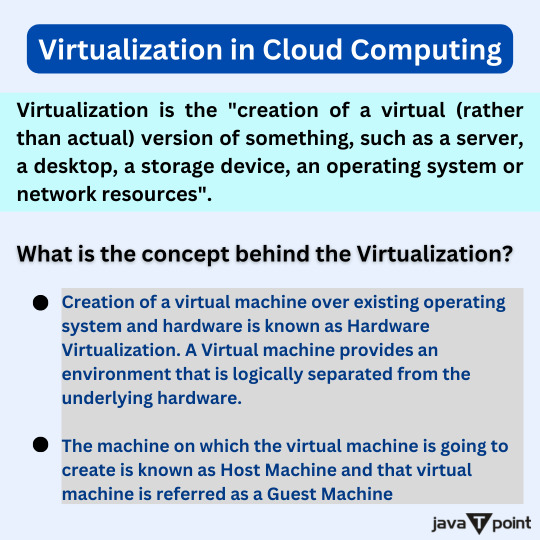
Virtualization in Cloud Computing
.
.
.
.
for more information and a cloud computing tutorial
https://bit.ly/4a9ymrG
check the above link
#cloudcomputing#privatecloud#publiccloud#hybridcloud#virtualization#multicloud#communitycloud#computerscience#computerengineering#javatpoint
0 notes
Text


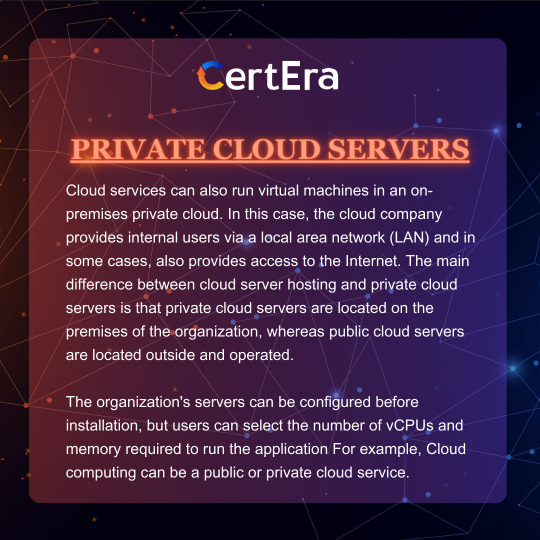

Categories of cloud servers
1 note
·
View note